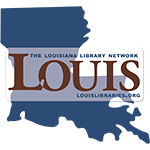Intro to Criminal Justice
Topic outline
-
Hello and Welcome to Introduction to Criminal Justice!
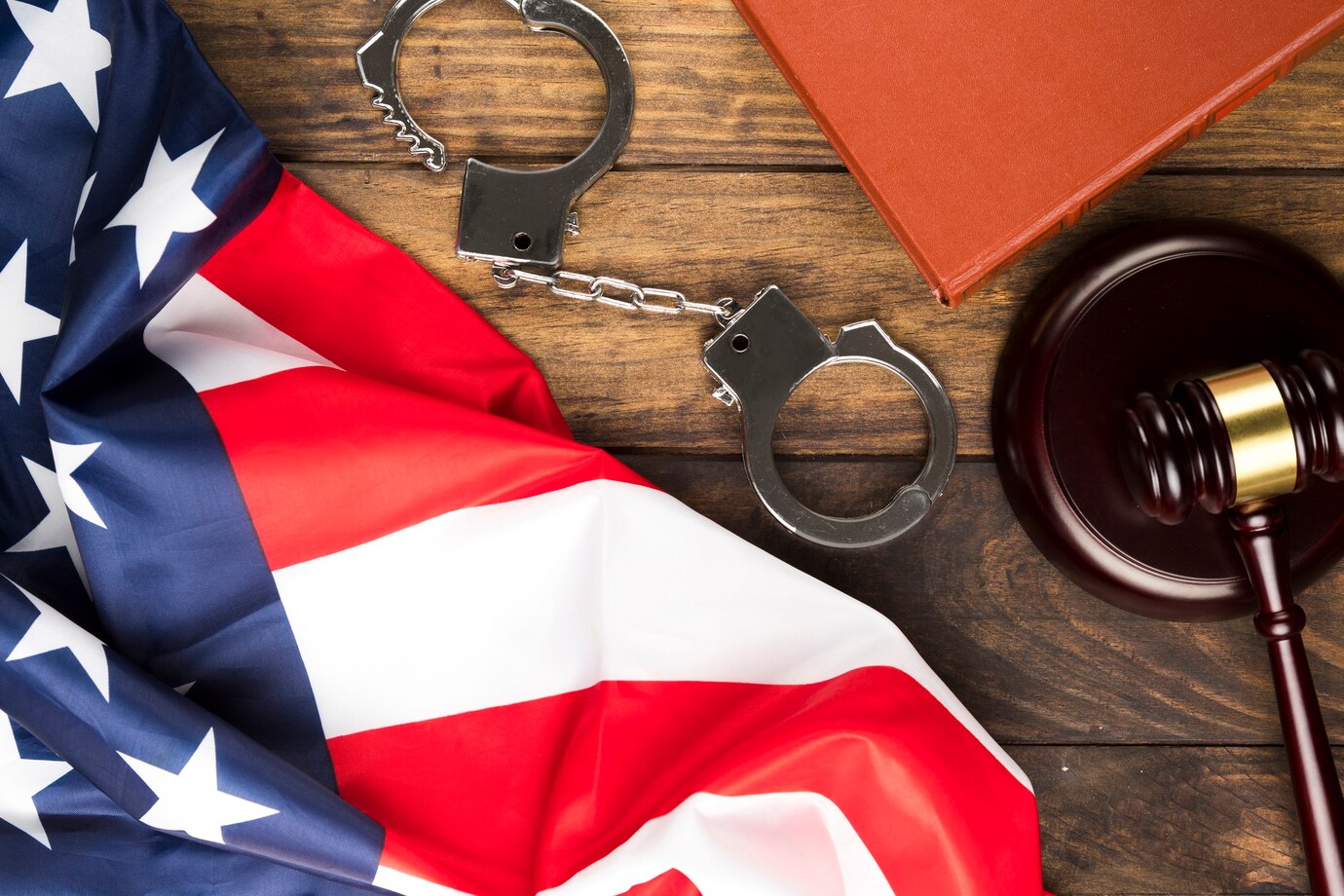 Image description: American flag, gavel and block, and handcuffs
Image description: American flag, gavel and block, and handcuffs
Image credit: "American flag with handcuffs," 2023, accessed via Freepik | Free license
Course Introduction
This course covers law enforcement, criminal courts, sentencing, penal institutions, juvenile justice, criminological theory, and community-based sanctions. It also includes historical and contemporary perspectives on components of the criminal justice system, as well as the legal and constitutional frameworks in which they operate.
Video
A brief video summary of the U.S. Criminal Justice System.
Video Transcript: SETexasCJ CriminalJustice System Transcript
Video Credit: SETexasCJ. (2016, January 1). Criminal Justice System [Video]. YouTube.
Course Purpose
The purpose is for students to gain an understanding of the American criminal justice system with a view to its social and institutional context and its structure and functioning. Designed for the beginning student in law enforcement, criminology, corrections, sociology, social welfare, government and pre-law, this course is an overview of the criminal justice system.
Students are expected to develop the following skills and knowledge base by the conclusion of the course:
- Able to demonstrate college level reading, writing, and oral communication skills.
- Possess adequate problem solving, creative reasoning, and critical thinking skills.
Prerequisites
1. Identify criminal justice as a system, process, and area of knowledge.This course has no prerequisites.
Course Learning Objectives (CLO)
Upon successful completion of this course, the student will be able to:
2. Identify the major components of the criminal justice system: law enforcement, courts, and corrections.
3. Differentiate the difference between the formal and informal processes of the criminal justice system.
4. Analyze the various contemporary criminal justice perspectives on approaching the crime problem.
Structure of the Course
Adopting institution should describe course structure, such as number of modules, to allow the learner to understand how the learning process is structured and carried out.
Navigating the Course
Adopting institution should provide learners information on how to navigate the course. Consider adding an introductory navigation video. Text description could include, for example:This course is set up in Modules covering various topics which may be accessed from the course navigation menu on the left or by scrolling below. Modules may be collapsed in the menu and it the body of the course to minimize scrolling. Each module includes the relevant chapters followed by various activities, which may include discussion forums, listening activities and quizzes, practice quizzes, module tests, and other relevant activities as appropriate for each module. Many items are required and may be marked as completed automatically when the activity has been submitted (the broken check box), but others will marked as done by the student (the solid check box).Please move through the items below and continue through the Learner Support and Getting Started modules before moving on to Module 1. Be sure to check for announcements and due dates to stay on track.
 This course and its contents are licensed under a Creative Commons Attribution 4.0 International License by LOUIS: The Louisiana Library Network, except where otherwise noted.
This course and its contents are licensed under a Creative Commons Attribution 4.0 International License by LOUIS: The Louisiana Library Network, except where otherwise noted. -
This module contains all the items you should review and complete before you begin Module 1. Before moving on, be sure to:
- Check the News and Announcements Forum
- Read the Course Syllabus and Schedule
- Introduce yourself to the class
- Read the instructions for the Q & A Forum
Good luck in the course!-
To get familiar with the characteristics of this course, goals, evaluation system, required textbook, tentative schedule, etc., download and read your syllabus.
-
Use this forum to tell us a little about yourself and your interests. Some topic ideas:
- What is your field of study/research interest or concentration?
- What are you most interested in learning about in this class and why?
- Have you ever taken an online class before?
- Any other information you would like to share with your classmates, such as special interests or activities.
Post a picture! We look forward to meeting you.
-
Use this forum to ask your instructor any questions you have about the course. You may post at any time, and your instructor will respond here. Be as specific as possible.
Please keep in mind that others can see your posts, so do not post any personal information. If you have questions about your grade, please email your instructor directly. You can expect a response to posts and emails within [X] hours. [Recommendation is 24 hours M-F, next business day on weekends.]
Subscription should be set to Auto.
- Check the News and Announcements Forum
-
-
To get familiar with the characteristics of this course, goals, evaluation system, required textbook, tentative schedule, etc., download and read your Syllabus.
-
-
-
This course map document outlines the alignment between the learning objectives, assessments, learning activities, instructional materials and tools in this course.
-
-
Use the information in this module to customize the template to your needs. This module is currently hidden from students, and available for you to refer to throughout the semester.
-
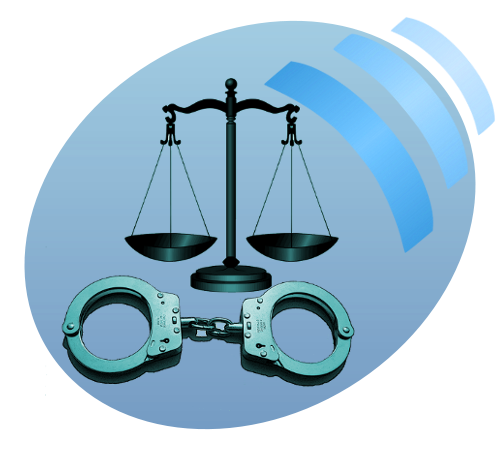
This module will broadly introduce crime, criminal justice, and criminology. It is designed to be a general overview of what the subsequent chapters will cover in detail. It also discusses how criminal justice policymaking – and policymakers – are shaped by the media representations of crime. Perhaps what we do not always realize is that the mass media plays an important role in the construction of criminals, criminality, and the criminal justice system. Our understanding and perceptions of victims, criminals, deviants, and police are largely determined by their portrayal in the mass media.
Image description: Law and crime icon with handcuffs and scales of justice
Image credit: [opens in new window] "Icon Law and Crime," by Wikimedia is licensed under the Creative Commons License, accessed October 2023
Module Learning Objectives (MLO):
Upon completion of this module, you will be able to:1.1 Identify the differences between deviance and criminality (CLO 1)
1.2 Describe the three components of the criminal justice system (CLO 2)
1.3 Identify the differences between crime control and the due process model (CLO 1)
1.4 Detail the differences between the interactionist, consensus, and conflict views in the creation of laws (CLO 1)
1.5 Discuss the role of the media and how it impacts our criminal justice system (CLO 1, 3)
Module Activities:
To achieve these objectives:
- Read the Module 1 Introduction
- Read Chapter 1 in Pressbooks Introduction to Criminal Justice (MLO 1.1, 1.2, 1.3, 1.4, 1.5)
- Read and review the information on the Louisiana's No Mans Land website and view the video Louisiana's Lawless Territory: The Neutral Strip Explained (MLO 1.1)
- Complete Pressbooks Chapter 1.2 Practice (MLO 1.1)
- Complete Pressbooks Chapter 1.6 Practice (MLO 1.2)
- Complete the Module 1 Written Assignment (MLO 1.2)
- Complete the Module 1 Discussion Forum (MLO 1.5)
- Complete the Module 1 Quiz (MLO 1.1, 1.3, 1.4)
Module Pressbooks Resources and Activities:
You will find the following resources and activities in this module at the Pressbooks website. Click on the links below to access or complete each item.
-
Chapter 1: Crime, Criminal Justice, and Criminology
This chapter will broadly introduce crime, criminal justice, and criminology. This chapter is designed to be a broad overview of what the subsequent chapters will cover in detail. It also discusses how criminal justice policymaking - and policymakers - are shaped the media representations of crime.
-
Immerse yourself in the history of Louisiana's "Wild West." Go to the Louisiana's No Mans Land website to read the history.
After you have finished reading the article, then view the video below for more information:
Video credit: 435American. (2020, June 4.) Louisiana's Lawless Territory: The Neutral Strip Explained [Video]. YouTube.
-
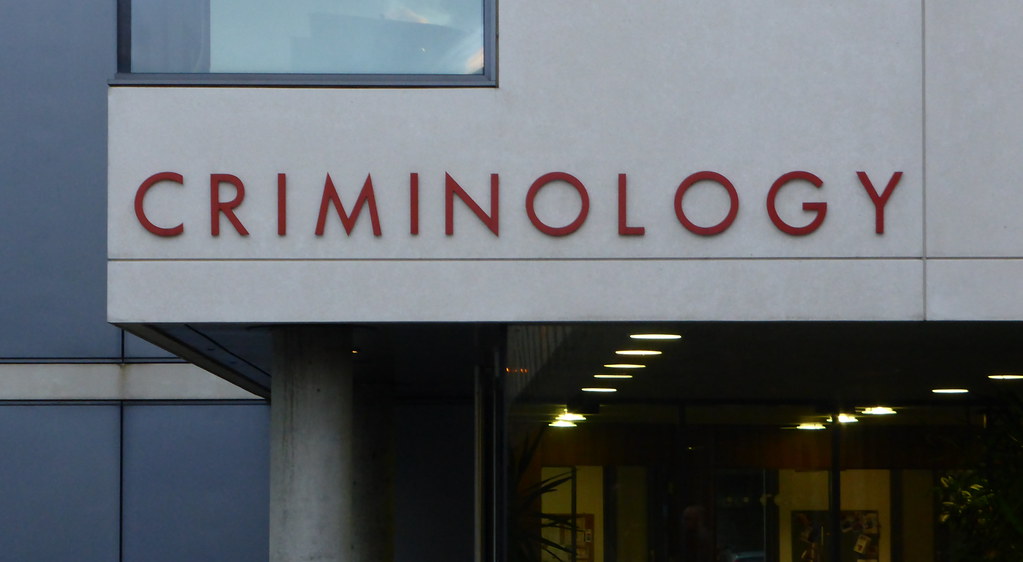 Criminology is an extremely nuanced profession. It's not just about researching crime causation (it is, but it isn't). Criminologists have to be experienced in a multitude of subject matters: psychology, sociology, economics, political science, biological science, religion, urban studies, social work, law, and more. This is because much of what goes into peeling back the layers of criminal behavior has to do with a lot of everything that happens to us and around us that makes us who we are and how we interact with not just our own inner struggles of right and wrong, but also with those external forces that contribute to our micro and macro-social interactions. This module will introduce you to the basic structures of criminological theory and expose you to how it has affected the processes of the Criminal Justice System throughout its entirety from as far back in history as can be found, to today, and into the future.Image description: Front of Cambridge University School of Criminology, EnglandImage credit: "Faculty of Criminology," 2023, accessed via
Criminology is an extremely nuanced profession. It's not just about researching crime causation (it is, but it isn't). Criminologists have to be experienced in a multitude of subject matters: psychology, sociology, economics, political science, biological science, religion, urban studies, social work, law, and more. This is because much of what goes into peeling back the layers of criminal behavior has to do with a lot of everything that happens to us and around us that makes us who we are and how we interact with not just our own inner struggles of right and wrong, but also with those external forces that contribute to our micro and macro-social interactions. This module will introduce you to the basic structures of criminological theory and expose you to how it has affected the processes of the Criminal Justice System throughout its entirety from as far back in history as can be found, to today, and into the future.Image description: Front of Cambridge University School of Criminology, EnglandImage credit: "Faculty of Criminology," 2023, accessed viahttps://www.flickr.com/photos/57899800@N00/15790552036, by yellow book; Licensed under CC BY 2.0.
Module Learning Objectives (MLO):Upon completion of this module, you will be able to:2.1 Examine Classical, Positivist, Chicago, Neoclassical, and Contemporary Schools of Criminological Theory. (CLO 1, 4)
2.2 Differentiate the links between crime control policy and theories of criminal behavior. (CLO 1, 3, 4)
2.3 Demonstrate effective application of criminological theories to behavior. (CLO 1, 3, 4)
Module Activities:
To achieve these objectives:
- Read the Module 2 Introduction (MLO 1)
- Read Chapter 2 of Pressbooks Introduction to Criminal Justice (MLO 2.1, 2.2, 2.3)
- Complete the Pressbooks Chapter 2 Practice (MLO 2.1, 2.2, 2.3)
- Complete the "Critical Thinking Questions" section in Chapter 2 (MLO 2.1, 2.2, 2.3)
- Complete the "Theory Exercise" found in Chapter section 2.1 (MLO 2.1,2. 3)
- Complete the "Theory Exercise" found in Chapter section 2.10 (MLO 2.1, 2.3)
- Submit the Module 2 Writing Assignment (MLO 2.3)
- Complete the Module 2 Discussion Forum (MLO 2.1, 2.2, 2.3)
- Complete the Module 2 Quiz (MLO 2.1, 2.2, 2.3)
Module Pressbooks Resources and Activities:
You will find the following resources and activities in this module at the Pressbooks website. Click on the links below to access or complete each item.
-
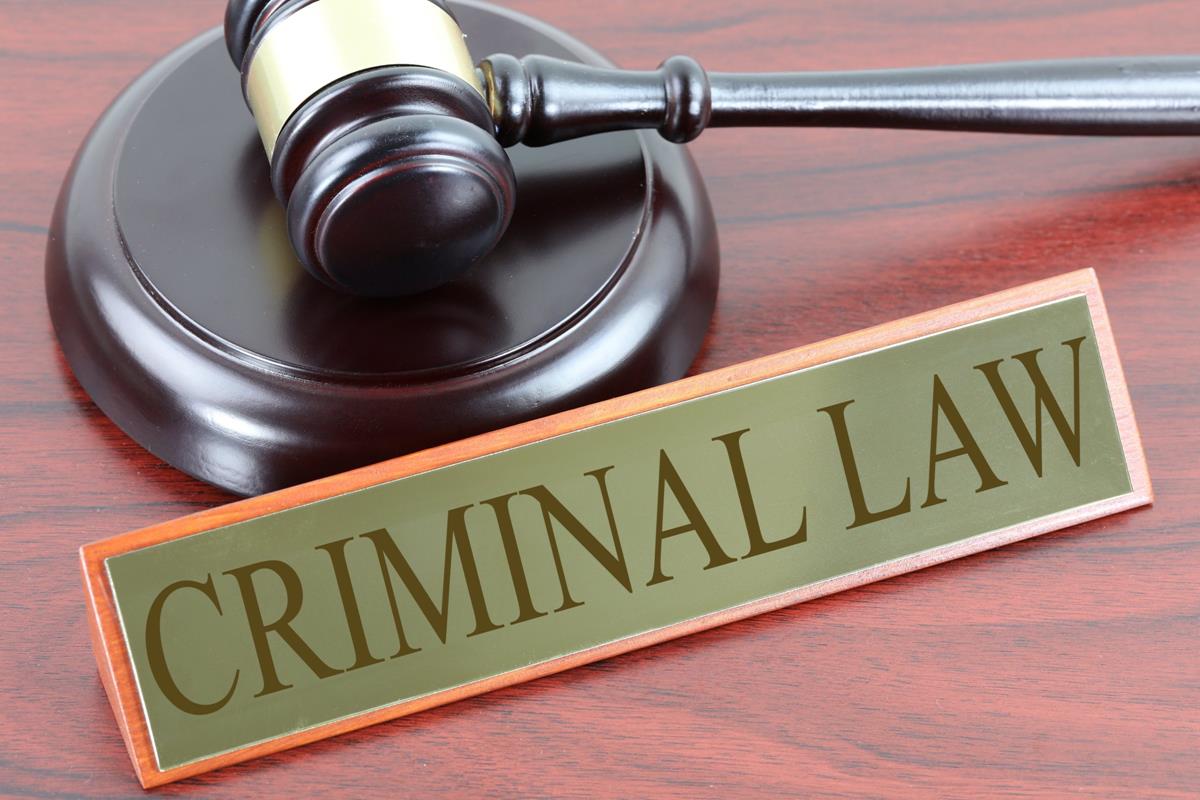 This module examines the fundamental principles of criminal
law. It describes the functions of formal criminal law (what criminal law
does and what it cannot do), how crimes differ from civil and moral wrongs, and
various classification schemes used in discussing criminal law. This section
also examines the sources of substantive and procedural criminal law (where we
look to find our criminal law), the limitations that the constitution places on
both substantive criminal law and procedural criminal law, and the important
concept of the rule of law in American jurisprudence (legal theory).
This module examines the fundamental principles of criminal
law. It describes the functions of formal criminal law (what criminal law
does and what it cannot do), how crimes differ from civil and moral wrongs, and
various classification schemes used in discussing criminal law. This section
also examines the sources of substantive and procedural criminal law (where we
look to find our criminal law), the limitations that the constitution places on
both substantive criminal law and procedural criminal law, and the important
concept of the rule of law in American jurisprudence (legal theory).
Image description: Criminal law nameplate with gavel and block
Image credit: "Criminal Law," 2023, accessed viahttp://alphastockimages.com/photo/11113/photo-details.html by Nick Youngson; Alpha Stock Images; License Creative Commons 3-CC BY-SA 3.0.
Module Learning Objectives (MLO):Upon completion of this module, you will be able to:
3.2 Identify the many ways in which criminal law is classified. (CLO 1, 2, 3)
3.3 Explain the many sources of substantive and procedural criminal law. (CLO 1)
3.4 Explain the limits the U.S. Constitution and Bill of Rights place on the ability to criminalize conduct. (CLO 1, 4)
Module Activities:
To achieve these objectives:
- Read the Module 3 Introduction
- Read Chapter 3 in Pressbooks Introduction to Criminal Justice (MLO 3.1, 3.2, 3.)
- Complete the Pressbooks Chapter 3 Practice (MLO 3.1, 3.2, 3.3, 3.4)
- Complete the Module 3 Written Assignment (MLO 3.2)
- Complete the Module 3 Discussion Forum (MLO 3.4)
- Complete the Module 3 Quiz (MLO 3.1, 3.2, 3.3, 3.4)
Module Pressbooks Resources and Activities:
You will find the following resources and activities in this module at the Pressbooks website. Click on the links below to access or complete each item.
-
Chapter 3: Criminal Law
This chapter examines the fundamental principles of criminal law. It describes the functions of formal criminal law (what criminal law does and what it cannot do), how crimes differ from civil and moral wrongs, and various classification schemes used in discussing criminal law.
- Read the Module 3 Introduction
-
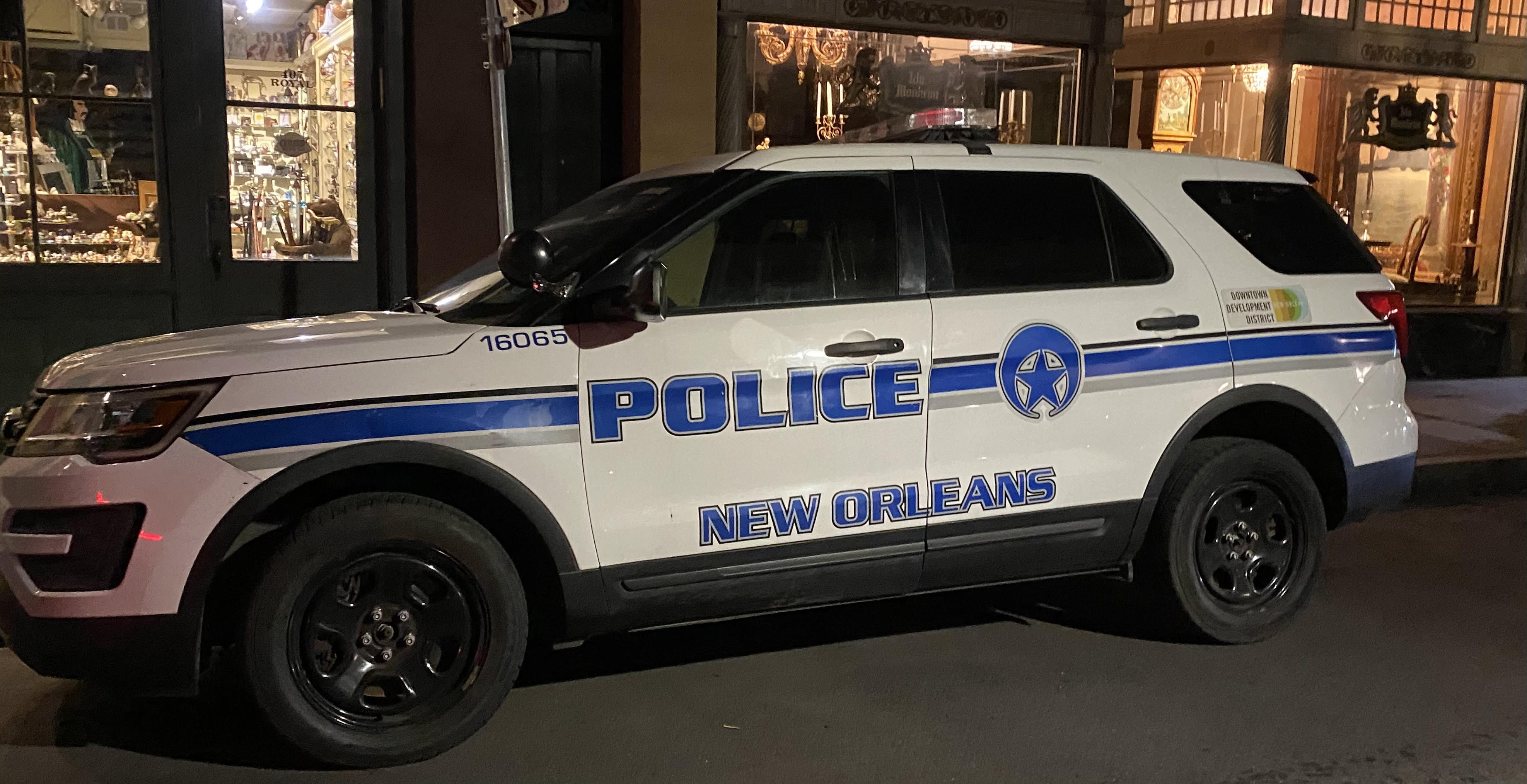 In this module, you will be introduced to the history of policing in the United States. Today, policing is under the microscope to ensure past mistakes are not repeated and forward momentum is reached. It is for this reason this section will explore the history, as well as the foundations, that the American policing system was built upon.
In this module, you will be introduced to the history of policing in the United States. Today, policing is under the microscope to ensure past mistakes are not repeated and forward momentum is reached. It is for this reason this section will explore the history, as well as the foundations, that the American policing system was built upon.Image description: New Orleans Police Department SUV patrol unit parked on side of street in New Orleans, Louisiana
Image credit: Photo of New Orleans Police Department SUV patrol unit by Pamela Simek, 2023 / License: Public Domain
Module Learning Objectives (MLO):
Upon completion of this module, you will be able to:4.1 Explain the history of policing through different eras (CLO 1, 2)
4.2 Critically evaluate training requirements and recruitment practices of law enforcement (CLO 2, 3)
4.3 Discuss police corruption pattern and types (CLO 3, 4)
4.4 Detail the hiring process for law enforcement (CLO 1, 3)
4.5 Examine the various career options in law enforcement (CLO 2, 3)
Module Activities:
To achieve these objectives:
- Read the Module 4 Introduction
- Read Chapter 4 in Pressbooks Introduction to Criminal Justice (MLO 4.1, 4.2, 4.3, 4.4, 4.5)
- Complete the Pressbooks Chapter 4 Practice (MLO 4.1, 4.2)
- Complete the Module 4 Written Assignment (MLO 4.2)
- Complete the Module 4 Discussion Forum (MLO 4.4)
- Complete the Module 4 Quiz (MLO 4.1,4. 2, 4.3, 4.4)
Module Pressbooks Resources and Activities:
You will find the following resources and activities in this module at the Pressbooks website. Click on the links below to access or complete each item.
-
Chapter 4: Policing
In this chapter, you will be introduced to the history of policing in the United States. Today, policing is under the microscope to ensure past mistakes are not repeated and forward momentum is reached. It is for this reason this section will explore the history, as well as the foundations, that the American policing system was built upon.
-

Image description: Midterm repeated four times with pencil eraser on right side
Image credit: Midterm (opens in new window) / License Creative Commons
In this module you will take your midterm exam for this course. Read the instructions carefully and take note of any special submission guidelines.
NOTE: Adopting institution can Include this module for midterm exam, edit as needed.
Module Learning Objectives (MLO):
Upon completion of this module, you will have:
- Read and review the Midterm Exam instructions.
- Scheduled your exam with the proctoring service [Adopting institution will include information if applicable, delete if not needed]
- Prepared for and submit your midterm assessment [Adopting institution will revise as needed]
Module Activities:
To achieve these objectives:
- Read and view the contents of "Exam Information and Instructions".
- Review the Midterm Exam guidelines in your syllabus to make sure you are ready. Click on Midterm Exam below and follow the instructions.
- Log in to the proctoring service and take your exam. [Adopting institution will include information if applicable, delete if not needed]
-

This module examines the structure and function of the criminal courts in America. It examines the concept of jurisdiction and describes the dual court system (the federal court system and the various state court systems). This module also examines the role and function of the various courtroom participants–the people who work in the courts. In addition, you will be introduced to policy in the criminal justice system. Policies that can be examined include issues related to juvenile justice, drug legislation, intimate partner violence, prison overcrowding, school safety, new federal immigration laws, terrorism, and national security.
Image description: Courtroom with judge's bench and prosecution and defense tables.
Image credit: "Courtroom," 2023, accessed via https://www.flickr.com/photos/85549619@N00/4312159033; by srqpix is licensed under CC BY 2.0.
Module Learning Objectives (MLO):
Upon completion of this module (Chapters 5 and 6), you will be able to:
5.1 Describe how a crime/criminal case proceeds from the lowest level trial court up through the U.S. Supreme Court. (CLO 1, 3)
5.2 Illustrate the appeals process in the American criminal justice system. (CLO 1, 2, 3)
5.3 Discuss the function and selection of state and federal judges and prosecutors in the American criminal justice system. (CLO 1, 3)
5.4 Discuss the importance of the criminal defense attorney in the American criminal justice system. (CLO 1, 3)
5.5 Examine the five sentencing philosophies in the American criminal justice system. (CLO 1, 3)
5.6 Compare and contrast indeterminate and determinate sentencing. (CLO 4)
5.7 Explain sentencing guidelines, mandatory minimums, and sentencing enhancements (CLO 4)
5.8 Explain the various types of punishments used in the American criminal justice system. (CLO 4)
Module Activities:
To achieve these objectives:
- Read the Module 5 Introduction
- Read Chapter 5 and Chapter 6 in Pressbooks Introduction to Criminal Justice (MLO 5.1, 5.8)
- Complete the Pressbooks Chapter 5 Practice (MLO 5.1, 5.2, 5.3, 5.4)
- Complete the Pressbooks Chapter 6 Practice (MLO 5.5, 5.6, 5.7, 5.8)
- Complete the Module 5 Written Assignment (MLO 5.5, 5.8)
- Complete the Module 5 Discussion Forum (MLO 5.4)
- Complete the Chapter 5 Quiz (MLO 5.1, 5.2, 5.3, 5.4)
- Complete the Chapter 6 Quiz (MLO 5.5, 5.6, 5.7, 5.8)
Module Pressbooks Resources and Activities:You will find the following resources and activities in this module at the Pressbooks website. Click on the links below to access or complete each item.
-
Chapter 5: The Courts
This chapter examines the structure and function of the criminal courts in America. It examines the concept of jurisdiction and describes the dual court system (the federal court system and the various state court systems). This section also examines the role and function of the various courtroom participants–the people who work in the courts.
-
Chapter 6: Sentencing
In this chapter, you will be introduced to policy in the criminal justice system. Policies that can be examined include issues related to juvenile justice, drug legislation, intimate partner violence, prison overcrowding, school safety, new federal immigration laws, terrorism, and national security.
-
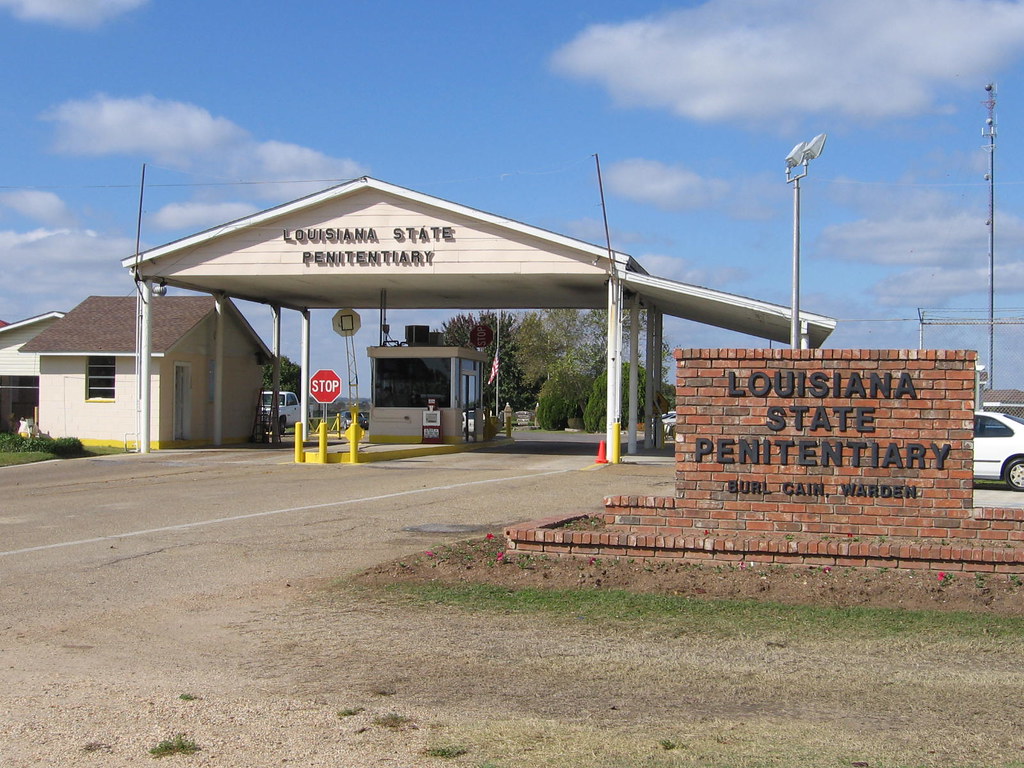
This section will examine corrections and community corrections. This module will look at a brief history of punishment, along with the history of jails and prisons, and the four ideologies of corrections, which include retribution, deterrence, incapacitation, and rehabilitation. This module will also discuss prisons versus jails and the difference between the two, types of prisons, prison levels, and prisoner rights.
Image description: Entrance to Louisiana State Penitentiary at Angola, Louisiana
Image credit: "Angola Prison," 2023, accessed via https://www.flickr.com/photos/34347190@N00/4136711442; by msppmoore is licensed under CC BY-SA-2.0.
Module Learning Objectives (MLO):
Upon completion of this module, you will be able to:6.1 Summarize the history of corrections and punishment (CLO 1, 2)
6.2 Describe the different levels of prisons (CLO 2)
6.3 Differentiate between the various ideologies of corrections (CLO 1)
6.4 Explain Community Corrections and its purposes (CLO 2)
6.5 Specify the different types of Community Corrections (CLO 2, CLO 4)
6.6 Discuss the advantages and disadvantages of the main types of Community Corrections (CLO 2, CLO 4)
Module Activities:
To achieve these objectives:
- Read the Module 6 Introduction
- Read Chapter 7 and Chapter 8 in Pressbooks Introduction to Criminal Justice (MLO 6.1, 6.2, 6.3, 6.4, 6.5, 6.6)
- Complete the Pressbooks Chapter 7 Practice (MLO 6.1, 6.2, 6.3)
- Complete the Pressbooks Chapter 8 Practice (MLO 6.4, 6.5, 6.6)
- Complete the Module 6 Written Assignment - Corrections (MLO 6.2)
- Complete the Module 6 Discussion Forum (MLO 6.5)
- Complete the Module 6 Chapter 7 Corrections Quiz (MLO 6.1, 6.2, 6.3)
- Complete the Module 6 Chapter 8 Community Corrections Quiz (MLO 6.4, 6.5, 6.6)
Module Pressbooks Resources and Activities:
You will find the following resources and activities in this module at the Pressbooks website. Click on the links below to access or complete each item.-
Chapter 8: Community Corrections
Up to this point, we have spent much time on understanding crime, how it is policed, and how it is prosecuted in the courts. Like the previous one, this chapter will cover the last third of the justice system, corrections, focusing on punishments that happen in the community.
-
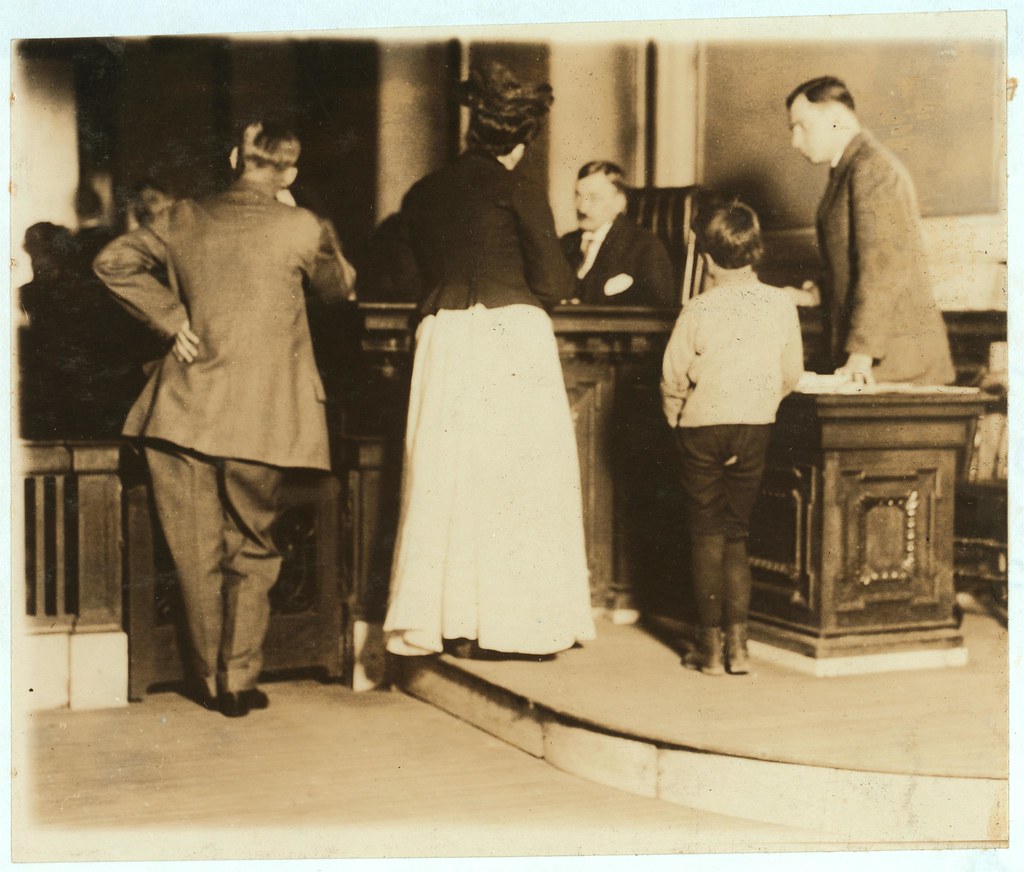
This chapter will focus on Juvenile Justice. This will be a broad overview of the juvenile court system, examine the pros and cons of the juvenile justice system, examine the various stages in the juvenile justice system, and discuss contemporary issues in juvenile justice.
Image description: St. Louis, Missouri, 1910, boy charged with stealing a bicycle in juvenile court in sepia tone
Image credit: "Juvenile Court," 2023, accessed via https://www.loc.gov/item/2018675656/; Library of Congress, LC-DIG-nclc-04645; License CC by 2.0.
Module Learning Objectives (MLO):
Upon completion of this module, you will be able to:
7.1 Summarize the history and purpose of the juvenile court (CLO 1)
7.2 Explain the pros and cons of the juvenile justice system (CLO 1, 2)
7.3 Briefly examine the stages of the juvenile justice system (CLO 2)
7.4 Examine the reasons supporting and criticizing the process of waiver to adult court (CLO 4)
7.5 Explain how due process has evolved through the juvenile court (CLO 2)
Module Activities:
To achieve these objectives:
- Read the Module 7 Introduction
- Read Chapter 9 in Pressbooks Introduction to Criminal Justice (MLO 7.1, 7.2, 7.3, 7.4, 7.5)
- Complete the Pressbooks Chapter 9 Practice (MLO 7.1, 7.2, 7.3, 7.4, 7.5)
- Complete the Module 7 Discussion (MLO 7.4)
- Complete the Module 7 Written Assignment (MLO 7.1, 7.2, 7.3)
- Complete the Module 7 Quiz (MLO 7.1, 7.2, 7.3, 7.4, 7.5)
Module Pressbooks Resources and Activities:
You will find the following resources and activities in this module at the Pressbooks website. Click on the links below to access or complete each item.
-
Since the end of World War II, the United States has been in a fierce state of ever-changing societal evolution: Civil Rights, Women's Rights, Political upheaval, Technological advancements, etc. All of these changes have put a strain on the Criminal Justice System to keep up with laws and policies and have challenged everyone's sense of what is right, and what is wrong. This module looks at some of the issues that the U.S. Criminal Justice System is facing in the Modern Era and the complexities of legislating and enforcing in times of continuous change.
Image description: United States map covered by American flag
Image credit: "USA Flag Map," 2023, by Lokal_Profil; accessed via https://commons.wikimedia.org/w/index.php?curid=2314947 / Licensed under CC BY-SA 2.5.
Module Learning Objectives (MLO):
Upon completion of this module, you will be able to:
8.1 Define transcarceration and recidivism. (CLO 4)
8.2 Specify the role mental health is playing in the criminal justice system. (CLO 1, 3)
8.3 Define terrorism and counterterrorism. (CLO 4)
8.4 Detail the complexities of cybercrime. (CLO 1, 3)
8.5 Identify the responsibilities of the Department of Homeland Security. (CLO 2, 3, 4)
Module Activities:
To achieve these objectives:
- Read Module 8 Introduction
- Read Chapter 10 of Pressbooks Introduction to Criminal Justice (MLO 8.1, 8.2, 8.3, 8.4, 8.5)
- Complete Pressbooks Chapter 10 Practice (MLO 8.3, 8.4, 8.5)
- Complete the Module 8 Writing Assignment (MLO 8.4, 8.5)
- Complete the Module 8 Discussion Forum (MLO 8.2)
- Complete the Module 8 Quiz. (MLO 8.1, 8.3)
Module Pressbooks Resources and Activities:
You will find the following resources and activities in this module at the Pressbooks website. Click on the links below to access or complete each item.
-
Chapter 10: Currents Issues in U.S. Criminal Justice
Weaving together threads presented throughout this text, this chapter will focus largely on the long-term crisis in U.S. prisons and jails – a result of a “punitive turn” that is now a half-century old, but refuses to fade. This chapter will also touch on new challenges to the Criminal Justice System in the forms of Terrorism, Cybercrime, and Homeland Security.
- Read Module 8 Introduction
-

Image description: The word "EXAM" written on a small chalkboard
Image credit: "Chalkboard" by Picpedia.org | Creative Commons
In this module you will take your Final Exam for this course. Read the instructions carefully and take note of any special submission guidelines. The Final Exam is comprehensive and covers all chapters.
Module Learning Objectives:
Upon completion of this module, you will have:
- Read and viewed the final assessment instructions
- Scheduled your exam with the proctoring service [Adopting institution will need to add information here if applicable]
- Prepared and submitted your final assessment
Module Activities:
To achieve these objectives:
- Read and view "Final Exam Information and Instructions".
- Review the final assessment guidelines in your syllabus to make
sure you are ready. Click on Final Exam below and follow the instructions.
- Log in to the proctoring service and take your exam. [Adopting institution will need to add information here for proctored exam only]
